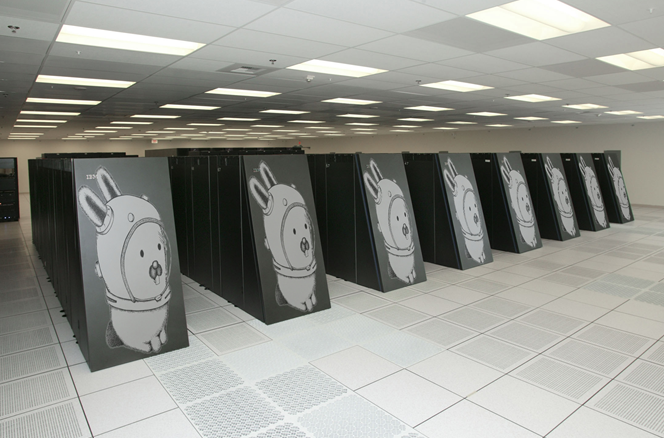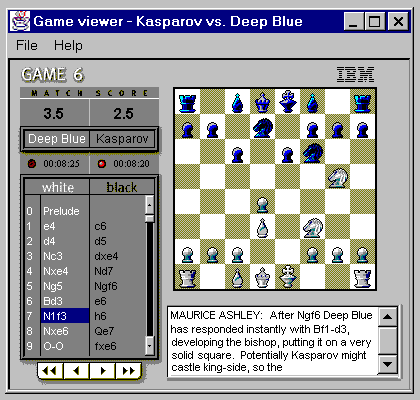In May of 1997 an IBM team completed the building of a supercomputer that could play and beat a world chess champion. The story of Deep Blue demonstrates what is possible in artificial intelligence. Deep Blue needed 30 parallel processors combined with 480 special purpose VLSI chess chips allowing it to analyze 200 million chess positions per second. The end result was a close fought victory over Garry Kasparov, the reigning world chess champion. The power required and form factor made Deep Blue intelligent but certainly not human. Deep Blue knew chess, nothing else. Deep Blue was immobile. To accomplish its chess-winning feat Deep Blue required more power than thousands of human brains.
Successors to Deep Blue have added more processors and decreased power requirements. Blue Gene, a more recent product of IBM research improves performance by a factor of 100 over Deep Blue. In March 2005, Blue Gene had reached peak performance of more than 100 teraflops, capable of doing simulations that used to take hours in nanoseconds. But Blue Gene, for all its computational skill, occupied up to 20 refrigerator-sized racks and continued to consume massive amounts of power, although considerably less than Deep Blue.
“The challenge of computer design in the 21st century will be energy efficiency,” says Eric Kronstadt, IBM Research’s director of exploratory server systems. “Blue Gene’s highly efficient design enables it to pack more compute power per cubic centimeter, by far, than any other computer in its class.” Blue Gene as a successor to Deep Blue demonstrates this, a trend to smaller, more powerful, less energy consuming computing technology. We appear however to be reaching the limits of what current silicon-based technology can provide in terms of computational capability and power consumption. We need, therefore, to vastly reduce both form factor and power consumption if we are going to approach the goal of designing artificial intelligence with human characteristics.

One of our distinct human advantages over artificial intelligence in terms of processing capability is our ability to do it with minimal power requirements. Our human brain runs on no more than 20 watts of power equal to the refrigerator bulb you turned on when you went to get an apple from the crisper to provide your brain with fuel. When you compare that with the computer I am using to write this blog, the factor of size and power consumption are minuscule. If we were to build a computer with the brain power equivalent to your brain or mine today we would require a power source equal in size to a small hydroelectric facility.
So our current technology of transistors and computer chips remain crippled by power consumption constraints. That’s why Dr. Kwabena Boahen, at Stanford University, is doing research on shrinking the power requirements for computing technology. Dr. Boahen states, ” Energy efficiency isn’t just a matter of elegance. It fundamentally limits what we can do with computers.”
In our next posting we will look at quantum computers, neuromorphic chip technologies and bio circuits. These are the cutting edge technologies that are driving the next stage in the computer revolution.
















Len a great discussion on the energy inefficiency of computing versus brain power. It would be very interesting to understand what the impact of computing is on the environment and the carbon footprint. In logistics it is very easy to calculate the cost of fuel consumption and the impact on the environment. As I sit here we have 4 laptop and a desktop (always on) that we operate. The laptops are only as good as the batteries and when at home base are plugged in. Going green is more than blue boxing, reducing energy consumption will definitely have a larger impact.
The carbon footprint of current computing technology far exceeds the energy consumed. The batteries on laptops use materials that are hazardous to the environment. The circuit boards contain metals that are highly polluting.
As we move away from silicon to other computing technology media the engineering of systems that are friendly to the environment should be a prime consideration in this century.